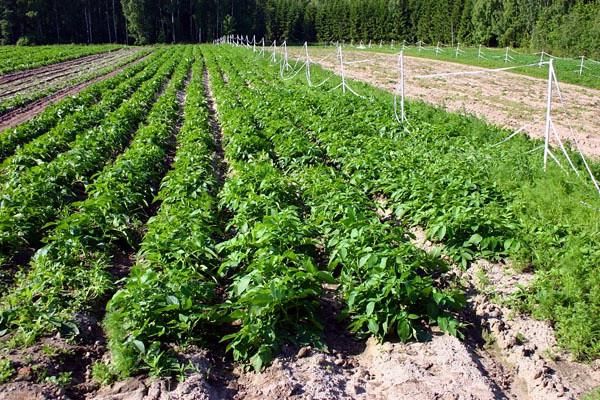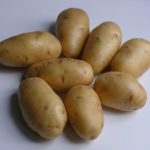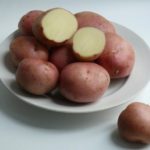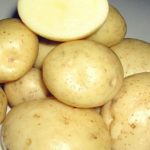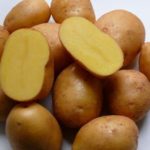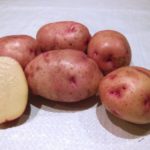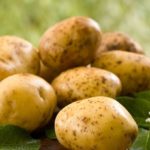Growing potatoes in Dutch is a technique that takes into account every little thing. When planting using this technology, up to 250-300 kg of tuber crops are collected from the weave.
Dutch technology provides potatoes:
- sufficient heat;
- oxygen supply to the roots;
- fertilizer.
Table of contents
Potato cultivation using Dutch technology
How many potato growing technologies are available
In addition to growing in the traditional method and in Dutch, there are other new ways: Chinese; technology developed by Doctor of Agricultural Sciences Jacob Meitlider from the United States; method of Galina Alexandrovna Kizima, who spent her childhood in a working village in the southern Urals.
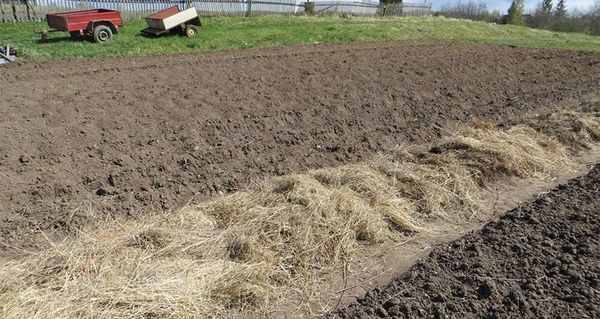
What varieties are suitable
The varieties from Holland are immune to diseases, they are high-yielding, but they are not not suitable for landing in northern Russia. There it is better to plant domestic zoned varieties adapted for home conditions.
Required to plant in the country and early and late potatoes.
Suitable Dutch potato varieties:
- Anosta - early. Tubers are yellow, even. The flesh is creamy. The potato is immune to the nematode.
- Red scarlett - early. Tubers of scarlet color, white flesh, when cooked does not change color.
- Impala - early variety. It is planted in the central regions of Russia, and in the Siberian Federal District. From germination to harvest takes 50 days.
- Jarla - early.Unpretentious to care, even planted in depleted land.
- Prior - early. He has immunity to viral diseases, nematode, late blight.
- Romano - medium early. Tubers are pinkish, white flesh. Immune to late blight.
- Monaliza - medium early. It is immune to all diseases.
- Sante - mid-season. Tubers are yellow, creamy pulp. Resistant to mechanical damage.
- EBA - medium late. Immune to viral diseases. Tubers are yellowish.
- Impala
- Romano
- Sante
Domestic varieties:
- Nevsky - medium early variety. Immune to nematode, cancer, scab, mosaic and other diseases. But its minus - tuber crops are stored at a temperature of about 0 degrees, otherwise they will germinate.
- Zhukovsky early. Immune to diseases. It tastes great, but there is quite a bit of starch in the tubers, so it does not boil soft. You can collect 600 kg of potatoes from the weave.
- Luck - early variety. It is immune to all diseases. Tubers are yellowish, pulp snow-white.
- Zdabytak - late grade. Immune to diseases. In tuber crops a large amount of starch.
- Nevsky
- Zhukovsky
- Luck
Is this method suitable for growing potatoes in the country
Potatoes are grown in the fields, using technology, and in the cottages, doing all the operations manually.
Technology detail
What is the Dutch way
- For the cultivation of tubers taken varieties from Holland, immune to diseases, which grows a large number of tubers. And in the northern regions of Russia they plant local zoned varieties. Select required only healthy tubers. Change the varieties planted.
- The tubers are selected, having 3-5 cm in diameter, with 100% germination.
- According to the landing scheme for 1 m² planted 6-8 tuber crops. It seems to the Russian gardener that with such planting the land is empty in vain, but according to this technology the bushes grow sprawling, they have powerful roots, they harvest more crops than with the traditional planting method.
- Even the Dutch feed potatoes, taking into account the needs of this variety.
- Spud required pile 10 cm high ridges.
- Harvest must be collected on time. If you need seed, potatoes are dug a month earlier than tubers intended for consumption.
Selection and preparation of seed material
For planting choose smooth healthy tubers 3-5 cm in diameterbest varietal.
Potatoes, which are smaller in size should not be chosen, since the grown bushes will be very weak. Larger potatoes are planted only if they harvest from their own seeds. There are 5 holes on each selected tuber crop.
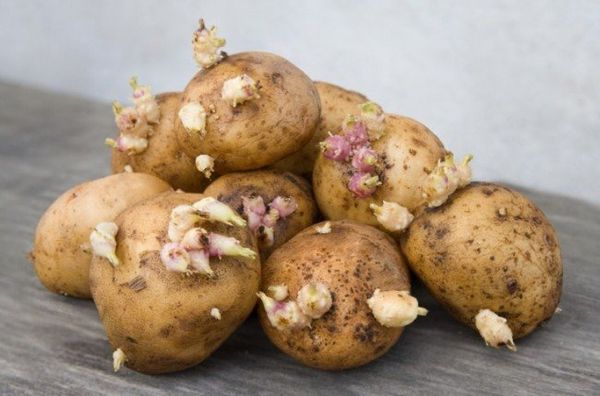
It is required to choose the right time for planting so that the shoots do not die from return frost. The tubers are carefully placed in bags of polyethylene with handles, when the shoots are 0.5 cm high. So it is convenient to transport potatoes to the landing site. For manual planting, wait until the sprouts placed in plastic bags grow to 2.5-3 cm.
Tillage before planting
Potatoes will be less sick and affected by pests if planted in one place. once in 3 years. It is required to give the soil a rest and for 1 year not to plant anything at all, but to mow the weeds. If you do not have such an opportunity, then plant tubers in the place where beans, peas, oats, and rye grew before.
Phosphorus, potassium, and nitrogen are scattered on an even place in the fall and the soil is dug to a depth of 22–27 cm.
If you have a slope, then in the fall do not dig up the soil and do not put top dressing, as in the spring with a flood it will wash away all the useful substances.
Care
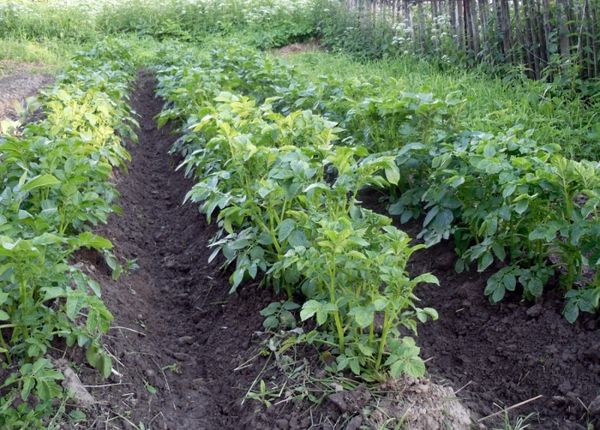
- In the spring they dig up the soil, make holes 6-8 cm deep. The distance between the rows is observed at 75 cm, and between the holes - 30 cm. But such a large distance has its advantages:
- The soil for hilling poured from between rows, because of this, the tubers are above the rows. The ridges are well lit by the rays of the sun, and oxygen is supplied to the root system.
- The cross-sectional area of the ridge is 1200–1500 cm².
- When heavy rains water does not stagnate under the bushes, as they are in the aisle;
- In case of heat and no rains, there is enough moisture in the ridge to prevent the potatoes from dying to rain or watering.
- In the hole first put rotted manure or humus.
- Then pour 100 grams of ash and a handful of crushed eggshell shell, as well as a bit of onion peel, which will scare away the wireworm and slugs.
- Tuber crops put in the wells upwards and sprinkled with primer.
- If you see weeds growing, pluck them out.
- When sprouts grow, roll them up so that the ridges have a height of 10 cm.
- If there is a threat of frost, the young shoots sprinkle with soil, and high shoots bend down and sprinkle with earth. When warm weather comes again, the bushes are raised and poured with water from a watering can.
- 14 days after planting, weeds are pulled out, and the soil is between the rows poured to sprouts so that the ridges are about 25 cm high, the width of the ridges at the base is 75 cm, and the top is 30 cm.
- When attacking the Colorado potato beetles, the bushes are sprayed with insecticides.
- If there is a drought, then the bushes are watered 1-3 times per season (1-2 times before blooming, 1 time - when blooming).
When and how to harvest
Then the skin will be strong, and the potatoes will be able to lie more time without spoiling.
That is, the cultivation of potatoes in Dutch is planting tubers at a distance of 30 cm, observing a distance between rows of 70 cm. These are also high ridges poured in and taking into account the need of potatoes for fertilizers.
